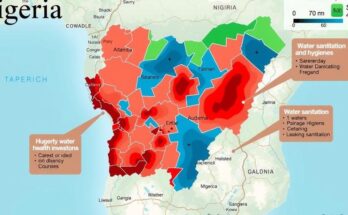Insurers are contending with rising costs from climate-related disasters, withdrawing from high-risk areas while still facing liability pressures. With insured losses covering only 40% of total economic costs, innovative measures are needed to ensure sustainability in coverage. Collaborative models in countries like Britain and Switzerland showcase potential, although frameworks must adapt to avoid leaving residents in vulnerable areas without protection.
Insurers are increasingly challenged by the rising frequency and severity of natural disasters linked to climate change. As they withdraw coverage from areas at heightened risk of wildfires, floods, and hurricanes, they may not escape financial responsibility; governments are unlikely to allow permanent insurance gaps as they grapple with budget constraints. Consequently, major insurance firms like AIG, AXA, and Chubb may ultimately bear substantial costs associated with these disasters.
Each continent has experienced severe weather events recently, amplifying losses. For instance, January’s California wildfires were estimated to generate damages upwards of $150 billion, while flooding in Germany in 2021 caused around $40 billion in damages. The overall economic impact from natural disasters reached $368 billion in 2024, driven predominantly by climate-related incidents such as tropical storms and floods, highlighting the urgency for insurers to adapt.
While insured losses typically represent approximately 40% of total economic costs from disasters, the remaining 60% remains uncovered. This discrepancy is partly due to publicly funded insurance programs like the U.S. National Flood Insurance Program. In response, private insurers like State Farm and Allstate are strategically reducing their exposure, especially in high-risk areas such as California and Louisiana, to mitigate potential expenditures.
The public is facing increased insurance costs due to the effects of climate change, which could reach $3 trillion by 2050. Governments are unable to shoulder the entire financial burden, which raises concerns about the sustainability of leaving certain areas without insurance coverage. There are various approaches among countries addressing this crisis; for instance, Britain’s Flood Re initiative enables coverage for flood-prone homes through a risk-pooling mechanism among insurers.
Switzerland employs a more robust model where 12 private insurers collaborate to cover the majority of the natural perils market, charging premiums based largely on property value rather than risk. While this system aids in equitably distributing costs among policyholders, its effectiveness in less affluent nations or during extreme loss events remains uncertain. The recent California wildfires demonstrate that even sensible insurance frameworks can falter when faced with unprecedented disasters, as observed with the state’s Fair Access to Insurance Requirements (FAIR) program that struggled financially under severe pressure.
The lessons learned suggest that reliance on insurers for emergency funding may be untenable, given the sector’s modest profit margins. Forward-looking strategies may include implementing stronger building codes to fortify at-risk properties against natural threats, thereby eventually restoring insurance coverage. Such preventive measures could mitigate the negative incentives of state-backed insurance policies, which often encourage habitation in high-risk areas, ultimately leading to increased financial losses.
A concerted effort by governments and insurers is necessary to navigate the increasing perils of climate change. As they seek viable solutions, insurers will likely bear a growing share of the financial burdens brought about by natural disasters, underscoring the urgency for innovative and sustainable insurance practices.
In summary, insurers are under increasing pressure due to climate-related natural disasters that are escalating in both severity and frequency. As they withdraw coverage from high-risk areas, they still face significant liabilities that governments are reluctant to wholly absorb. Diverse solutions, such as collaborative insurance models and robust building regulations, present pathways toward a more sustainable insurance landscape in the face of climate change. However, immediate coordination between governments and the insurance sector is crucial to address these pressing challenges effectively.
Original Source: www.tradingview.com




